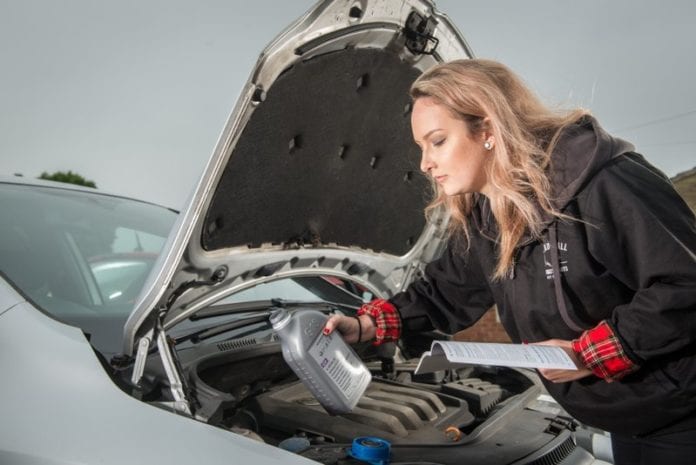Checking engine oil regularly is an important part of maintaining a car. You should check the oil level every few weeks. If the level runs low you could damage or even wreck your engine.
Let’s break this down into three parts – how to check the oil level, how to choose the right oil for your car, and how to top up the oil level.
Step one: check the oil level
- Park the car on level ground and let the engine cool down for 10 minutes or so. This will allow the oil to drain back into the sump (which is where the oil is stored).
- Open the bonnet and find the dipstick. It should be easy to spot but if in any doubt, check the car’s handbook.
- Pull the dipstick out fully, and wipe it with a rag or paper cloth before putting it all the way back in.
- Take the dipstick out again and hold it horizontally. Look for two lines on the stick. One marks the minimum level, one the maximum. Oil should show somewhere between the two, ideally close to the maximum.
- If the oil level is okay, just replace the dipstick and close the bonnet. If the level is low, you need to get some more…
Step two: choosing the right oil
- Engine oils might look the same, but they’re not. Read your car’s handbook or use an online oil checker tool to find the correct oil for your engine.
- The oil will be described as “5W-30”, “10W-40” or similar. The numbers describe the viscosity of the oil. If you never paid much attention in science, viscosity means its resistance to flow, or how runny or thick the oil is.
- The number with the W after it shows the engine’s viscosity when cold. The second number is the viscosity at normal engine temperatures.
- When looking at engine oil grades, the lower the number the better it will flow. Thin, low-viscosity oils flow easily to protect the engine when cold. Thick, high-viscosity oils are typically better at maintaining film strength to protect engines at high temperatures.
- You will also see engine oils described as “fully synthetic” or “semi-synthetic”. Fully synthetic oils are often recommended for modern cars, especially if they have turbocharged engines or run at high temperatures. But don’t worry too much about this, so long as you are buying the correct grade of oil for your engine, as recommended by the car manufacturer.
Step three: topping up the oil
- Pop the bonnet, and unscrew the oil filler cap. Check the handbook if you are not sure where this is.
- Place a funnel in the hole so you don’t spill any oil.
- Top up the level a little at a time, checking the level using the dipstick to make sure you don’t overfill the sump.
- When the level is close to the top line on the dipstick you’re done. Screw the filler cap back in place, shut the bonnet, and the car is ready to drive.
If you get stuck at any stage when checking engine oil, or you notice that oil is leaking, then ask a reputable garage for their help.


